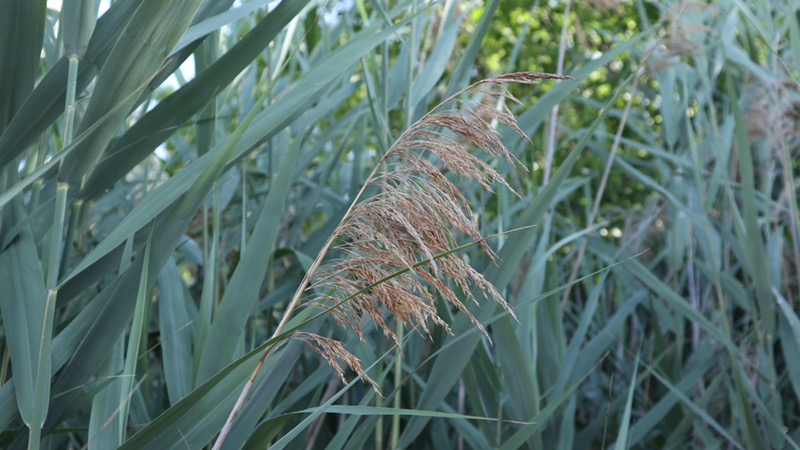Common Reed (Phragmites)
Common Reed, or simply by its scientific name, Phragmites, is an invasive plant native to Eurasia.
It grows in dense, tall stands, which can clog up streams, ditches and depression areas, leading to flooding-related issues, such as infrastructure damage and road inundation, affecting driver safety if alongside roads. Common Reed spreads quickly and crowds out native plants. The loss of native plants reduces the biodiversity of an area. This results in reduced ecosystem health and less resilience to environmental change.
What it looks like

| Form | A reed up to 5 metres tall. |
|---|---|
| Habitat | Often found in disturbed areas and alongside standing water, including along the edges of wetlands, beaches and roadside ditches. |
| Leaves | Alternates on the stem, flat, gradually tapering to a point, and often held at a 45-degree angle from the stem; ligules (a thin outgrowth at the junction of leaf and leafstalk) include a membrane and hairy fringe. |
| Flowers or fruit | Flower and seed heads are large, dense and purple-brown in colour. |
| Stem | Hollow, green and approximately 0.5 to 1.5 centimetres in diameter. |
A native subspecies of Common Reed (Phragmites australis subsp. americanus rather than the invasive Phragmites australis subsp. australis) can sometimes be found in Ontario. This subspecies can mainly be identified by its thinner, sometimes red-striped stems and less aggressive growth tendencies. If you believe you have seen native Common Reed growing on City-owned or private property, please refer to the Ontario Invasive Plant Council for further information or call 311 to be put in contact with a forestry professional.
How it spreads
Common Reed spreads very effectively by extensive root systems and root fragments, as well as by airborne and waterborne seeds. Patches of Common Reed can become as dense as 200 stems per square metre.
What you can do
Brush seeds off your shoes and pets before leaving a park or natural area to prevent transporting them to another location.
Report invasive Common Reed plants found in City parks and natural areas.
Remove invasive Common Reed plants on your own property. Don’t compost any removed material, as these plants can regrow from fragments and can contaminate new areas. Place any removed material in a dark plastic bag for one to two weeks in the sun to ensure any plant material is no longer viable, then dispose of it regularly with other garbage.